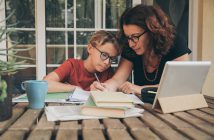Kids from all families, whether Caucasian, Asian, Black or Hispanic, meet in one place, a classroom. Despite their different backgrounds, all of them want a place they can quench their thirst for education. It’s your responsibility as an educator to give them the attention they need without any discrimination. Every student has a different ability, and you should come up with a strategy that meets all their needs. Put your chalk aside, and explore these seven effective teaching methods.
1. Make Them Move
There were days when students were glued to their seats for an entire lesson, but fortunately, those days are gone. Students should be moving during the lesson to keep themselves engaged.
For instance, if it’s a Chemistry class, you can ask your students to perform a chemical test. That means they won’t have to take seats throughout and watch you do demonstrations on your desk and write on the wall. Moving their bodies triggers brain breaks.
2. Make Them Feel the Pain of Missing Out
Many teachers are desperate for attention from their students. I know it’s not your wish to experience the same. Lack of attention can be painful, and the feeling that someone missed something important is painful as well.
Tell them about people of high profile who got demoted from their position just because they didn’t answer a question about something, which they should have learned from their curriculum or rule book. Let them know that there are people who skipped classes and now they can’t skip positions.
3. Show and Tell
The best way to start your lessons is by showing and telling. Showing means to do something practical, and telling means sharing knowledge or information orally.
You need to show them how to do specific tasks. It won’t be useful to speak to the kids the entire lesson and not focus on what they should know and how to do something.
4. Encourage Students to Have Groups
Every single individual on this earth is different. So are your students. Thus, your students don’t have the same abilities, and so you should allow them to work together by helping them organize groups. They will be open to one another and share their ideas.
By doing so, they will gain self-confidence and improve their communication and critical thinking skills. You can ask them to do different tasks, create drama sets, or solve mathematical puzzles.
5. Ask Scaffolding Questions
Scaffolding is asking different-levelled questions, and it’s, in fact, a very interesting and helps you to learn quickly. You probably experienced it while doing your praxis exam practice and you should utilize it as well.
All students can start with simple questions then you make them more difficult so that you find out where each one of them are struggling.
6. Teach With VAK
VAK means Visual, Audio, and Kinesthetic. These three represent the type of learners. Finding out the different types of students you have is your responsibility. It’s either they understand more by seeing, hearing or feeling.
The best environment for a student is where he can see, hear, and feel the materials. Create animation videos and presentations to help your students learn better.
7. Clear Lesson Goals
Organize your lesson by being clear on what you want your students to learn. For example, if you want them to learn about different modes of transport, don’t teach about communication within a transportation class.
If you can’t state what you expect them to learn, then the targeted goal will be lost. Clear lesson goals will help everyone to focus on each aspect of the lesson.
8. Conclusion
It can be challenging to be an effective teacher because each student is different and unique. However, if you use effective teaching methods, you will be able to touch the lives of your students and make them productive people in the future.




